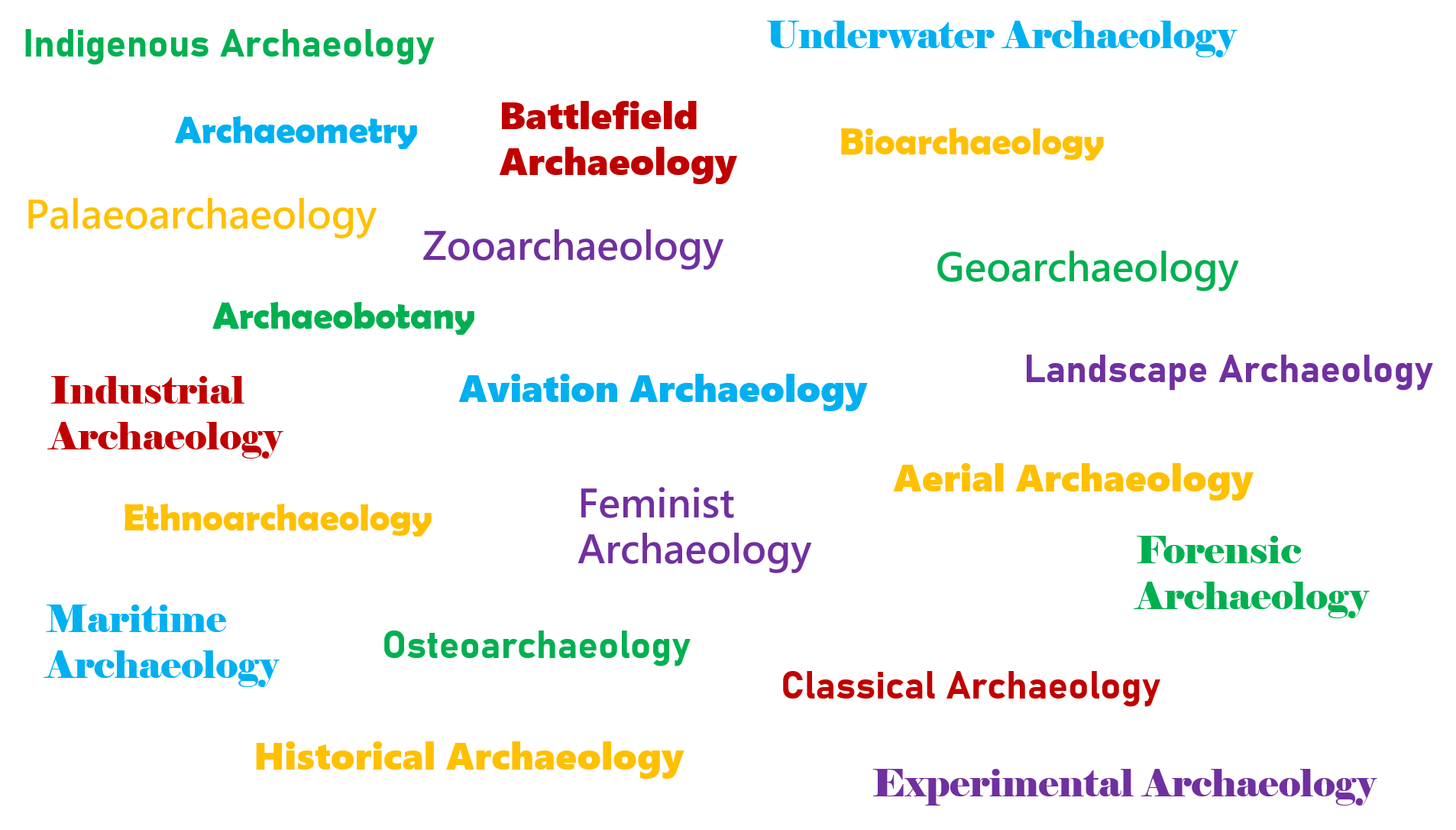What is archaeology?
Archaeology is the study of past human activity through the recovery and analysis of the things they left behind. We call this stuff “material culture” and it includes artefacts, monuments and buildings, biological remains and cultural landscapes.

Why is archaeology important?
Archaeology helps us to learn about the past and gain a greater understanding of how we have developed to this point in time. This can help us to address some of the big questions about who we are as a society and can inform future decisions.
Archaeology reaches back into the deep past to provide evidence of life before the historical record. We have no written records for the prehistoric period but through archaeology we know what tools they used, the kind of structures they lived and worked in, what food they ate and how they buried their dead.
As well as shedding light on ancient humans, archaeology can also give a voice to people who don’t appear in the historical record. Generally, only the thoughts and feelings of prominent people were chronicled; people didn’t really record the lives of the everyday individual. Archaeology on the other hand is all about the ordinary; it studies the stuff left behind by everyone, not just the elites. It is about all of us. Furthermore, archaeology can provide the concrete evidence to corroborate, or even refute, historical sources. History tends to be written by the winners, after all, so archaeology can highlight the bias of the written record.
Archaeology is a very versatile subject!

How do we do archaeology?
There are many activities that fall under the umbrella of archaeology. Excavation is the most well-known but there is a whole range of techniques that archaeologists use to study the past. In fact, excavation is often one of the last stages of an archaeological investigation. This is because excavation is a destructive process; you can only excavate a site once so it is important that there is a good reason to do so, and that it is done carefully, thoroughly, and that everything is recorded fully.

The first stage of an archaeological investigation is research. Sometimes this is to find a new site; sometimes it is to find more information about a site that has already been discovered. Archaeologists will consult a range of sources during this phase including old maps, local archives, previous excavation reports and online databases such as the local Historic Environment Record. This research allows archaeologists to assess whether further survey is required and where to focus on.
The next stage is to undertake a survey of the site. This may be by a non-intrusive technique such as geophysical survey or by an intrusive method such as digging test-pits or trial trenches. Sometimes a combination of techniques is used.
Depending on the results of the survey, the next step will be to carry out an archaeological excavation of the site. Archaeologists will carefully excavate a trench, working down through the layers recording any features present and recovering any archaeological objects from within the layers. This is a painstaking process that involves photography, drawing of detailed plans and meticulously labelling all objects and samples removed.
The final stage of an archaeological investigation is known as post-excavation and includes further processing of the archaeological finds, scientific analysis of the finds and samples, analysis of all the data produced by the investigation, and writing up of the final report. This stage involves even more research and for a big archaeological site can take many years to complete. Once the report is published it will be used by others for future research – there is always more we can learn!




